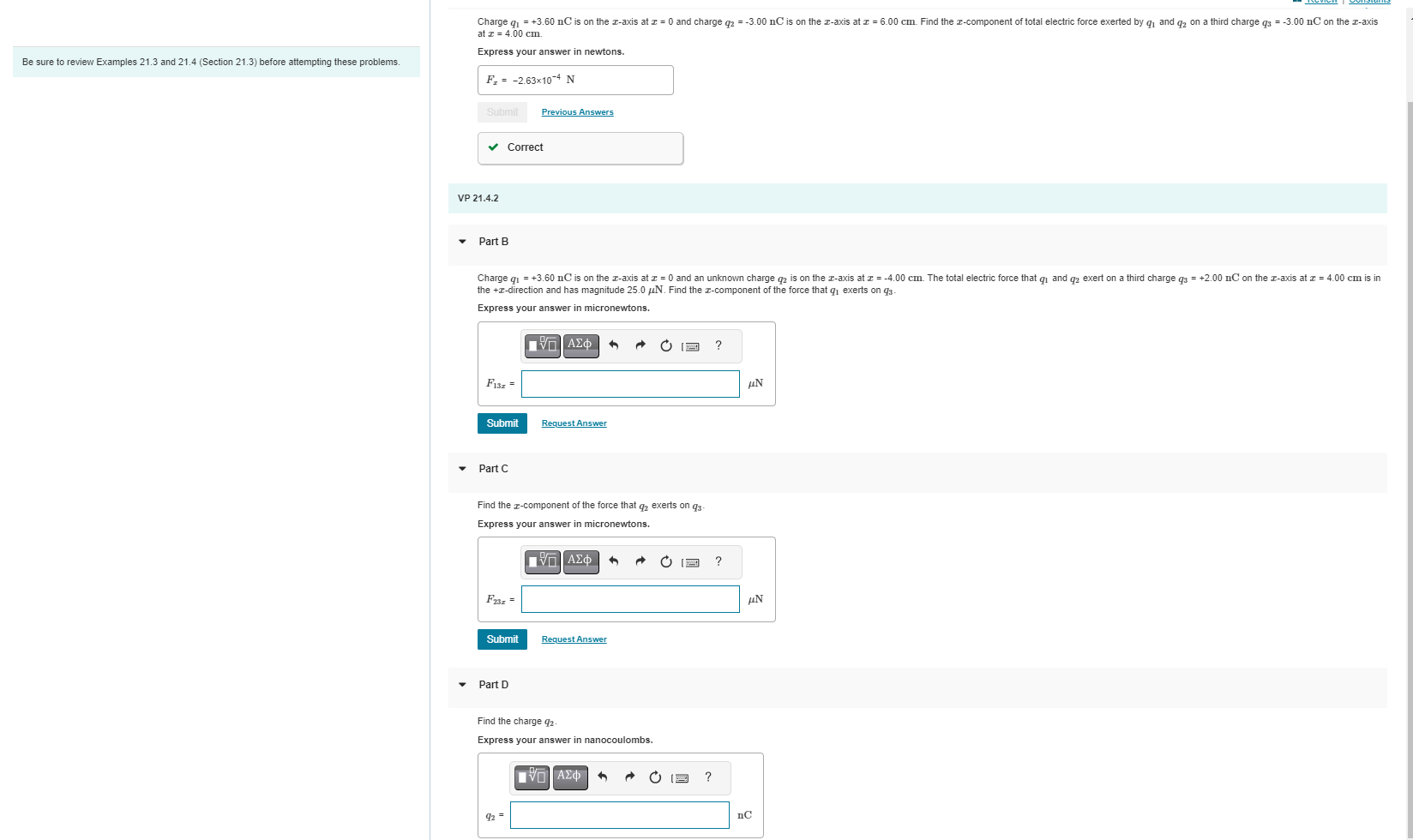Answered step by step
Verified Expert Solution
Question
1 Approved Answer
Be sure to review Examples 21.3 and 21.4 (Section 21.3) before attempting these problems. Charge q = +3.60 nC is on the z-axis at

Be sure to review Examples 21.3 and 21.4 (Section 21.3) before attempting these problems. Charge q = +3.60 nC is on the z-axis at x = 0 and charge q = -3.00 nC is on the z-axis at x = 6.00 cm. Find the z-component of total electric force exerted by q and q on a third charge q3 = -3.00 nC on the x-axis at 4.00 cm. Express your answer in newtons. F-2.63x104 N Submit Previous Answers Correct VP 21.4.2 Part B Charge q = +3.60 nC is on the z-axis at x = 0 and an unknown charge q2 is on the x-axis at x = -4.00 cm. The total electric force that q and q exert on a third charge qs = +2.00 nC on the x-axis at z = 4.00 cm is in the +x-direction and has magnitude 25.0 N. Find the z-component of the force that q exerts on qs Express your answer in micronewtons. F13z= Submit Request Answer Part C Find the z-component of the force that q exerts on q3 Express your answer in micronewtons. F23x= Submit Request Answer Part D Find the charge 92- Express your answer nanocoulombs. 92= ? ? ? nC N N
Step by Step Solution
There are 3 Steps involved in it
Step: 1

Get Instant Access to Expert-Tailored Solutions
See step-by-step solutions with expert insights and AI powered tools for academic success
Step: 2

Step: 3

Ace Your Homework with AI
Get the answers you need in no time with our AI-driven, step-by-step assistance
Get Started


